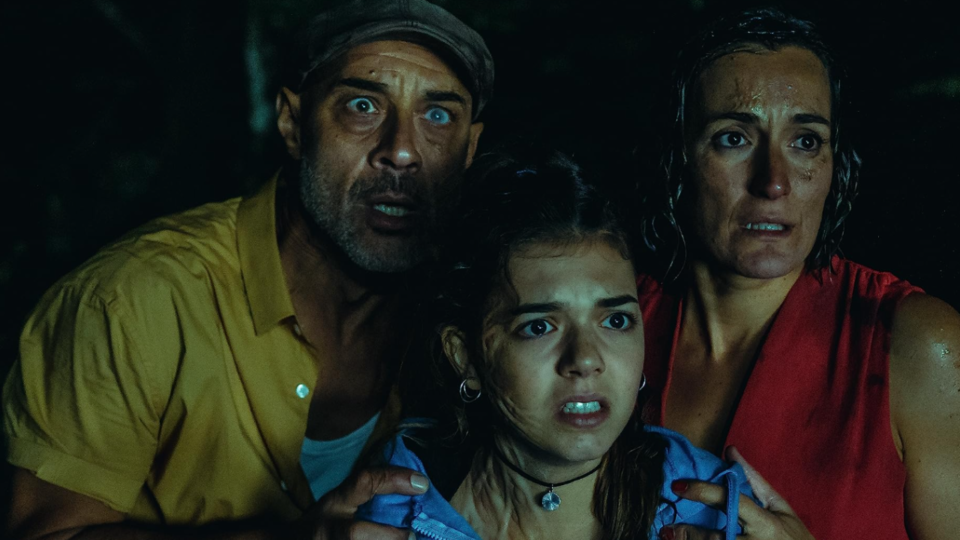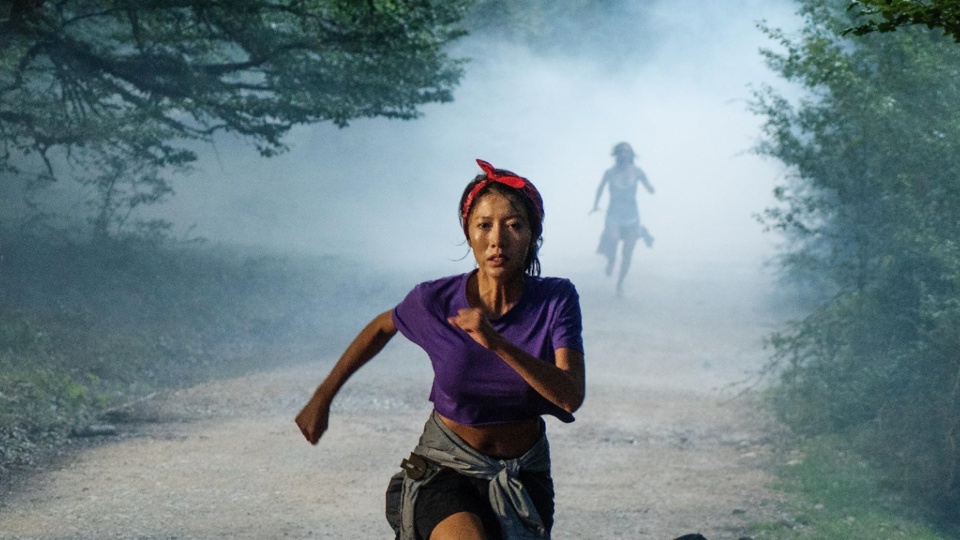‘The Passenger’: A Genre-Defying Film Where Spain’s Past and Present Collide [Horror En Español]

Spain is no stranger to the horror genre, with director Álex de la Iglesia dominating with over 25 directing credits on IMDB. While being famous for horror comedies, most of Iglesia’s work does tend to span a multitude of genres. But he isn’t the only one finding new ways to terrify and entertain audiences. Directors Fernando Gonzales Gomez and Raul Cerez follow Iglesia’s footsteps with their debut feature The Passenger. The directors didn’t just focus on a specific genre. They combined comedic moments, good horror tension, practical gore, and sci-fi elements to create a road trip narrative filled with many detours, twists, and turns.
The Passenger follows a driver named Blasco (Ramiro Blas). His newest venture is driving around customers in his old Pest Control van named Nessa. His latest trip, however, takes a drastic and hectic turn while driving three new occupants. Behind him sits Mariela (Cecilia Suaréz), a religious nurse with terminal cancer, and Lidia (Cristina Alcázar), a businesswoman and worried mother dropping off her daughter at her ex-husband’s house. In the passenger seat sits Marta (Paula Gallego), Lidia’s daughter. She’s a teenager angry at the world and with whom Blasco begins to form a tentative bond. The four undergo a series of events that starts with a close encounter with an extraterrestrial and ends with a silent global invasion.
Traditionalist Ideals Vs. Modern Perspectives

Within the first ten minutes of The Passenger, the film quickly establishes Blasco as an unlikeable protagonist. He is the embodiment of traditional machismo ideals. He’s arrogant, dismissive, and stubborn especially when talking about the “greatness” of the past. Luckily Blasco’s ideals are immediately questioned when he meets these three strong women. Each of them brings their own beliefs and flaws. Mariela, Lidia, and Marta don’t adhere to Blasco’s traditional ideologies and confront his beliefs head-on.
The first and brief dispute between Blasco and Lidia concerns the ethics of bullfighting. This arises when a bullfighting sword falls out of Nessa. It ignites the conversation and within seconds the audience learns both viewpoints. Blasco is for the endangerment of the bulls for the sake of the sport while Lidia is against it. Even though Blasco lost his eye in a bullfighting accident, he still holds the sport in high regard. Marta, on the other hand, worries about the inevitable death of the bull.
This conversation may seem out of place but it’s in fact a Chekov’s bullfighting argument of sorts. It serves two functions in The Passenger. First, the argument foreshadows the climactic battle between Blasco and the alien we are soon to meet. Second, it displays a modern look at a traditional sport.
Another major discussion between Blasco and the women (in other words, the traditional vs. the modern) is the meaning of being of feminist. As expected Blasco is against the idea. To him, the word means women are out for revenge. The women compose themselves but still teach him that’s not the true meaning of being a feminist. Most of the civil arguments are with the two older women in the car. Luckily Blasco slightly lowers his defense with Marta, which allows their bond to grow. Their first point of understanding comes from recognizing each other’s past traumas; Blasco’s glass eye and Marta’s noticeable facial burns.
I wish I could say the bond between Blasco and Marta is a comment on Spain’s merging beliefs between the modern and the traditional. Unfortunately, not fully embracing its themes is a fault of The Passenger. During the setup of the film, Gonzales and Cerez present interesting conversations. We see both the feminist and macho viewpoints of each side. But by the end of the third act when the horror overtakes the narrative, every single conversation is dismissed. The ingredients are all present to critique the macho tendencies of Blasco’s older traditions and viewpoints. But the climax doesn’t convey anything. We continue following Blasco in this new world. Whether he’s changed or not, we’ll never know. Blasco’s demeanor mimics his introduction of taking life by the wheel and just pushing forward.
The Impressive Film Making of Fernando Gonzales Gomez and Raul Cerez
Where The Passenger lacks in holding onto its theme, it’s made up for by the great filmmaking of the directing duo. The film twists and turns into different subgenres of sci-fi, horror, and comedy. Each of these subgenres is held together by the abundance of gooey practical effects that drip and spurt all over each cast member.

In terms of horror, The Passenger enters parasite horror through the lens of a creature feature. It follows suit by hiding away the infected humanoid body after the cold opening. The audience is left wondering what happened to the creature until the end of the first act. This is where Nessa and its occupants come in contact with the infected human. The corpse with parasitic worms inside is on the side of the road waiting to infect its next host. By trying to be a good samaritan Blasco brings the body onto the back of the van. Inviting the foreign entity onto the van marks the beginning of the film’s gooey hijinks. The infected body comes to life and acts like a humanoid monster with one thing on its mind: to spread the infection.
The Passenger isn’t a perfect horror comedy, but it does exceed what it was trying to achieve. When the tension is present, there’s a slice of comedic relief wedged in perfectly. The road trip angle is never lost as we transition heavily into horror. And while the film may lean more into one specific genre at times, it manages to surpass the bumpy road through its charm and characters. The heart of the film surrounds the characters of Blasco and Marta. Their conversations and care for each other are genuine and carry the film. Just like most road trip movies, the journey isn’t about the destination but the people you meet on the way.
Categorized:Editorials Horror En Espanol

